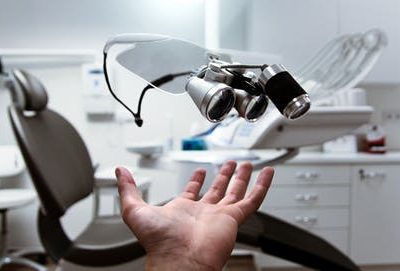Many people go through life not realizing the importance of orthodontic care. Orthodontists play a crucial role in maintaining oral health, aesthetics, and function. But how do you know when to see an orthodontist? In this article, we’ll delve into the signs that indicate it’s time to make an appointment, ensuring your smile remains healthy and straight. If you’re looking to improve your dental health or address specific issues with your teeth or jaw alignment, understanding these signs can help you make informed decisions.
The Role of an Orthodontist in Oral Health
Orthodontists are specialized dental professionals trained to diagnose, prevent, and treat dental and facial irregularities. They work on aligning jaws and teeth to improve oral health and enhance smiles. Unlike regular dentists who handle a broad range of oral health issues, orthodontists focus specifically on correcting bites, occlusion, and the straightness of teeth. Their expertise is crucial for addressing complex dental issues that can impact your overall health.
For instance, poor alignment can lead to tooth decay, gum disease, and even jaw problems, which underscores the importance of timely orthodontic intervention. While many people associate orthodontics with braces and teenagers, people of all ages can benefit from orthodontic evaluations and treatments.
Early Signs: Children and Adolescents
For children, early orthodontic assessments can have a significant impact. The American Association of Orthodontists recommends that children have their first check-up with an orthodontist by the age of 7. At this age, an orthodontist can detect subtle issues with jaw growth and emerging teeth, even while baby teeth are still present. Early intervention can often guide jaw growth and permanent teeth to positions that benefit the child orthodontically and prevent more serious problems down the line.
Signs that your child may need early orthodontic evaluation include difficulty chewing or biting, mouth breathing, thumb sucking, or crowding of teeth. It’s also important to note if your child has an imbalanced facial profile or jaws that shift or make sounds.
Adulthood and Orthodontic Treatment
Orthodontic treatment isn’t just for kids. Many adults seek orthodontic care for both aesthetic and health reasons. One of the clearest signs that you should see an orthodontist is if you notice your teeth shifting over time. Teeth crowding or spacing issues not resolved during childhood only get worse, leading to potential gaps and plaque buildup. Such problems can lead to gum disease and tooth decay.
Moreover, if you experience frequent jaw pain, clicking, or difficulty in closing your mouth, it may indicate temporomandibular joint disorders (TMD), which an orthodontist can address.
Common Dental Issues Needing Orthodontic Attention
Several dental issues strongly suggest that it’s time for orthodontic care. These include overcrowded teeth, large gaps between teeth, an overbite, underbite, crossbite, or open bite. Each of these conditions can cause oral discomfort, speech impediments, and make it difficult to maintain proper oral hygiene, increasing the risk of cavities and gum disease.
For instance, overcrowded teeth make brushing and flossing challenging, leading to an increased risk of cavities. An open bite could cause speech problems and difficulties with chewing. Catching these problems early on with the help of an orthodontist can save you time, pain, and money in the long run.
Aesthetic and Functional Concerns
Aesthetic concerns, though often seen as superficial, can greatly impact an individual’s confidence and quality of life. Many people visit an orthodontist simply because they’re unhappy with the appearance of their teeth. Whether it’s fixing alignment for a more symmetric smile or closing a gap, orthodontics can significantly enhance one’s self-esteem.
Functionally, misaligned teeth can make chewing and speaking challenging. If you experience discomfort or embarrassment due to these issues, it’s a clear signal to consult an orthodontist. Additionally, straight teeth make for easier brushing and flossing, thus improving oral health and preventing cavities and gum disease.
Technology and Modern Solutions in Orthodontics
Orthodontic technology has advanced significantly in recent years, offering quicker, discreet, and more comfortable solutions. One specific advancement in dental care includes dental implants in Jaffrey, NH, which are often utilized to replace missing teeth, thereby preventing the adjacent teeth from moving out of position.
Innovations such as clear aligners have become popular over traditional braces due to their aesthetic appeal and adjustability. These aligners are removable, making it more convenient for patients to maintain oral hygiene during treatment. The range of solutions means that treatments can now be tailored to individual needs, making orthodontic care a more accessible option for many people.
Evaluating Costs and Setting Expectations
The cost of orthodontic treatment varies significantly depending on the complexity of the case and the type of treatment chosen. While some may worry about expenses, knowing the average price of dental implants and other treatments can help in planning. Many practices provide flexible payment plans or financing options, and insurance frequently covers a portion of orthodontic care.
Making an informed decision about orthodontic treatment means understanding not just financial costs, but also the time commitment and lifestyle adjustments required. Discussing with an orthodontist about what to expect during and after treatment will aid in setting realistic expectations and achieving a satisfying outcome.
Addressing Dental Emergencies
Occasionally, dental emergencies may necessitate urgent orthodontic attention. Accidents or trauma to the teeth and mouth can occur at any age, and understanding when to seek help is crucial. Broken braces or wires, severe discomfort, or tooth injury are all reasons to consider reaching out for Monadnock Dental emergency services, which provide immediate care to mitigate damage and discomfort.
Even without sudden emergencies, persistent pain or discomfort should never be ignored. These symptoms could indicate severe underlying issues requiring professional assessment and intervention.
Your Path to a Healthier Smile
Recognizing when to see an orthodontist can profoundly impact not only your oral health but your overall wellbeing. By being proactive and cognizant of the signs that necessitate orthodontic care, you can take charge of your dental health journey. Keep in mind that it’s never too late; whether you’re exploring orthodontic treatment for yourself or your child, taking the first step can help pave the way for healthier, happier smiles.
Ultimately, maintaining consistent dental checkups and monitoring any changes in your oral health will guide you in seeking timely orthodontic care. So, embrace your journey towards optimal oral health and take charge by being aware of these signs and solutions.



